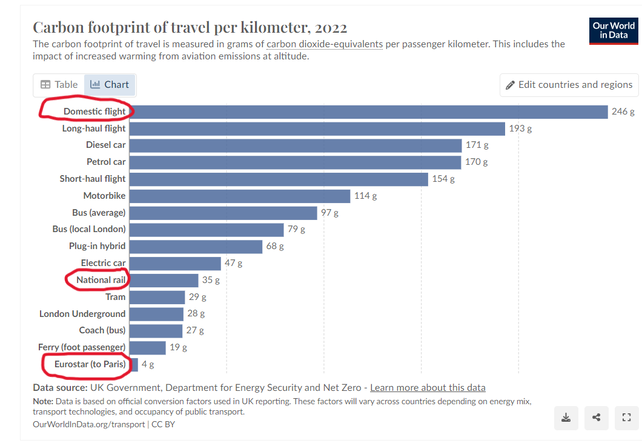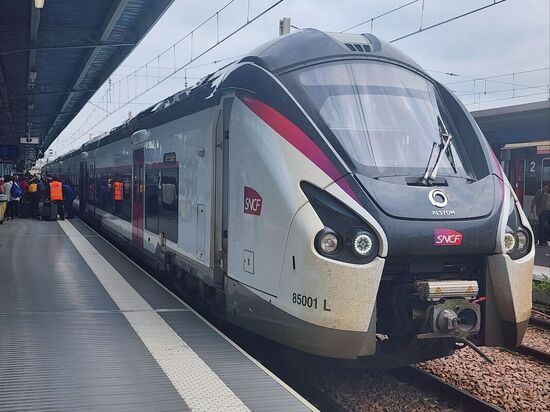Climate friendly transport
Why Air New Zealand needs to get onboard with passenger rail.
CLIMATE CHANGETOURISMAIRLINES
Paul Callister & Robert McLachlan
11/28/20234 min read


Air New Zealand has a problem. The national airline needs to be profitable and, traditionally, this has involved increasing passenger numbers. In the past, this growth has been one of the many factors leading to the demise of passenger rail in Aotearoa New Zealand. But, like the whole global aviation industry, the airline is now under increasing pressure to reduce emissions. Guided by the Science Based Targets initiative, Air New Zealand has a stated goal to reduce carbon intensity by 2030 by 28.9%, from a 2019 baseline.
Air New Zealand’s biggest challenge is to reduce emissions from its international network. This will not be easy. There are likely to be small ongoing efficiency gains. But large reductions rely on the hope that so called Sustainable Aviation Fuels (SAFs) will be produced in sufficient quantities to allow the significant replacement of fossil fuels. Further in the future, hydrogen may also play a role.
But the airline also needs to reduce emissions from its domestic flying. Again, SAFs are seen as part of the solution. But, here, there is hope that electric planes will eventually replace many regional flights. Worldwide, there are currently a plethora of projects endeavouring to produce electric planes that could replace the current regional fleet of ATRs and the smaller de Havilland Q300. But there are significant challenges to overcome, including battery density and safety certification. So it is highly unlikely that we will see significant numbers of people using electric planes by 2030.
By contrast, regional and long-distance electric passenger trains have long been operating safely throughout the world, primarily through the use of overhead wires. Some passenger networks are fully electrified, for example in Switzerland. Now, overseas, battery-operated trains are beginning to fill the gaps in electrified networks. New Zealand is ordering 18 of tri-mode trains that can use both existing overhead lines and batteries. These will run in the lower North Island. But the order could now be expanded so further services could be started in other parts of the country.
Not only do electric trains create very low levels of emissions, but they are also extremely energy efficient as they require only a fraction of the renewable electricity needed to power an electric or hydrogen plane. Their added advantage is their ability to link isolated communities that are located next to railway tracks but are far from airports. Currently, with no trains, and a poor inter-city bus network, people who are young, old or disabled face major transport challenges. As our population ages, this older group that is unable, or unwilling, to drive will expand.
Rather than competing with trains, could Air New Zealand achieve some of its required emission reductions, while also gaining new customers, by working with rail operators? Could Air New Zealand even become a rail operator itself? Its mission statement specifies that its concern lies with people, not specifically with planes:
“Our driving purpose is all about people. We're here to 'Enrich our country by connecting New Zealanders to each other and New Zealand to the world'.”
Air New Zealand’s Mission Statement goes on to say:
“Our aircraft's tails all proudly bear the Māori symbol of the Mangōpare, or hammerhead shark. The Mangōpare represents strength, tenacity, and resilience. The symbol is also known as the koru, the sign of new life, renewal, and hope for the future.”
If Air New Zealand really cares about the planet and the future of the people who live on it, it could provide hope to future generations by showing innovative thinking through teaming up with rail in order to bring down transport emissions.
Such partnerships overseas are starting to become more common, especially in Europe. In North America, examples can be found where routes use a mix of planes and buses.
A number of possible arrangements come to mind. One is code sharing. But could Air New Zealand actually run a train, perhaps in partnership with KiwiRail or potentially a private operator such as Transdev? Transdev, which runs the Wellington Metro network, also operates night trains in Europe. Auckland to Wellington is a perfect distance to run a night train. Then, emission conscious travellers could choose to use the night train for both legs of the trip between Wellington and Auckland or perhaps for only one leg.
Increasingly, companies and other organisations, such as universities, are under pressure to reduce emissions. A night train would offer their staff a low emission travel option on the busy Auckland-Wellington route. Other routes could also be considered, such as Auckland to Tauranga, and, especially for tourists, Auckland to Rotorua. Unlike the magical solutions proposed, trains could be delivered and be operating well before 2030.
Currently, the government fully owns KiwiRail and has a majority shareholding in Air New Zealand, potentially facilitating the development of a partnership. Partnerships are not without precedent. In 2012, under the Key led National government, Air NZ established a partnership with the Department of Conservation.
If there was code sharing, and one leg was an international flight, this would raise an interesting question. Currently, if someone uses a domestic flight to join up to an international one both are exempt from paying GST. But even without direct code sharing, why if someone uses the train instead, or perhaps a bus, should this not also be exempt? Or better still, in order not to provide unnecessary incentives for flying, both forms of travel should be treated equally, and this tax loophole could be closed. The additional revenue raised could help support the revival of rail.
With the level of transformation to low emission travel needed, we can no longer treat transport modes in isolation. We need to use all the tools within the avoid-improve-shift framework and Air New Zealand should demonstrate corporate leadership and responsibility by teaming up with rail.




